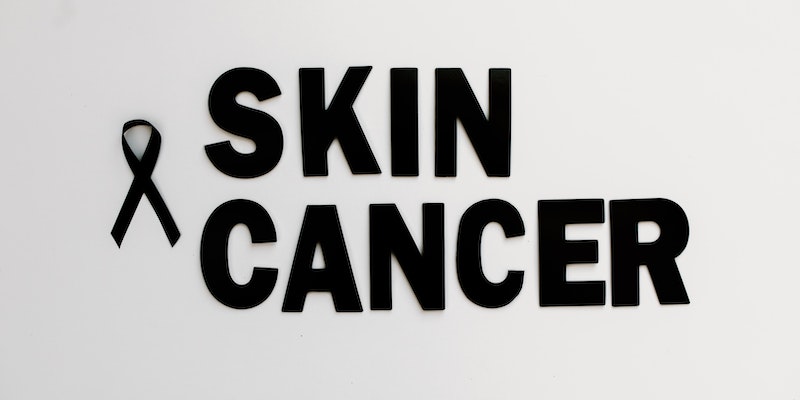Treatment Options for Shingles
Oct 01, 2023
Reactivation of the varicella-zoster virus (VZV), which causes chickenpox, causes shingles, a painful, blistery rash. This article covers medical, complementary, and preventive shingle treatments to help you understand this condition.
Understanding Shingles
Shingles are caused by the varicella-zoster virus waking up. Its visible and felt symptoms paint a complete picture of this medical condition.
Origin and Symptoms
The varicella-zoster virus, which causes chickenpox, causes shingles. Chickenpox virus remains dormant in nerve tissues. When immunity is weakened, shingles can return. Common symptoms include painful rashes, blisters, fever, headache, and digestive issues. Early shingles blood tests are necessary for diagnosis and treatment.
Affected Demographics
One in five get shingles, and the risk rises with age. AIDS, cancer, and immunosuppressive therapy patients are at risk. Developing effective shingles treatment and prevention strategies requires demographic knowledge.
Risk Factors and Triggers
Many factors can reactivate the virus. Chronic stress, aging, and immune-compromising conditions are examples. Healthcare providers and patients must understand these risk factors and triggers to recognize and treat shingles.
Diagnosis
Timely and accurate diagnosis is essential for effective treatment. Medical professionals usually diagnose shingles by looking at the rash and symptoms. In ambiguous cases, a shingles blood test may confirm the virus.
Significance of Timely Intervention
Intervening promptly when shingles strikes is not merely about symptom management—it’s a race against potential complications. Recognizing the warning signs and understanding the avenues of treatment available is a significant step in this journey.
Complications and Risks
Shingles can precipitate complications, most commonly postherpetic neuralgia (PHN). This condition, characterized by persistent nerve pain, affects approximately 20% of shingles patients, primarily those over 50. The significance of adhering to shingles treatment guidelines becomes evident when considering the potential risks and complications associated.
Prevention of Further Spread
Early intervention not only alleviates symptoms but also prevents the condition from progressing to more severe states. It’s essential to isolate the affected individual to avoid spreading the virus to those who have never had chickenpox, particularly pregnant women, newborns, and immunocompromised individuals. Implementing shingles treatment guidelines j can help curb the spread.
Long-term Impact on Quality of Life
Shingles can have a lasting impact on some individuals, affecting their overall quality of life. Chronic pain, vision impairment, and other complications can impede daily activities and mental well-being. Hence, following established guidelines, a comprehensive approach to shingles treatment is indispensable.
Medical Therapies for Shingles

Addressing shingles involves a multifaceted approach, combining antiviral medications, pain management, and treatment for postherpetic neuralgia. This section delves into the medical therapies available, providing a glimpse into the road to recovery.
Antiviral Medications
Antivirals are the cornerstone of shingles treatment. Acyclovir, famciclovir, and valacyclovir are approved to inhibit viral proliferation. Following shingles treatment guidelines, these drugs can relieve symptoms and lower PHN risk when given within 72 hours after rash development.
Pain Management
Managing shingles pain is crucial for patient health.Ibuprofen, naproxen, and acetaminophen relieve pain. Prescription opioids may treat severe pain but may cause reliance and side effects.
Medications for Postherpetic Neuralgia (PHN)
Many treatments are available for PHN. Examples include gabapentin, pregabalin, tricyclics, and topicals. Shingles treatment guidelines must be followed because each treatment has a different mechanism and side effects.
Corticosteroids and Other Treatments
Antihistamines and corticosteroids may be administered to alleviate inflammation and itching. Healthcare providers and individuals must understand treatment options and follow recommendations for best results.
Gabapentin, pregabalin, tricyclic antidepressants, and topical medicines treat PHN, each with side effects.
The Role of Vaccination in Shingles Prevention

In the quest to prevent shingles, vaccination emerges as a frontline defense. This preventive measure is particularly significant for those who fall into high-risk categories, ensuring added protection against the varicella-zoster virus.
Available Vaccines
Two vaccines play an integral role in shingles prevention: Zostavax and Shingrix. While both have demonstrated efficacy, Shingrix, a non-live vaccine, showcases higher effectiveness and is the preferred option according to the shingles treatment guidelines. Individuals aged 50 and above are recommended to receive this vaccine, regardless of their history of chickenpox or shingles.
Effectiveness and Duration
Vaccines, particularly Shingrix, have significantly prevented shingles and its complications, such as PHN. Clinical studies indicate that Shingrix offers over 90% protection against shingles, with efficacy remaining above 85% in individuals aged 70 and older. This robust protection underscores the importance of following shingles treatment guidelines for vaccination.
Accessibility and Administration
Accessibility to vaccines is crucial for widespread shingles prevention. Health organizations and clinics strive to maintain vaccine availability, ensuring the public can access this preventive measure readily. A shingles diagnosis blood test can identify individuals who might particularly benefit from vaccination, thereby fortifying defense against the virus.
Safety and Side Effects
Although vaccines are tested for safety, some people may experience side effects. Pain at the injection site, fatigue, muscle pain, and headaches are joint. However, the benefits of vaccination in preventing shingles far outweigh the transient discomfort of these side effects.
Living with Shingles: Lifestyle and Coping Strategies
Managing shingles goes beyond medical interventions. Adopting specific lifestyle modifications and coping strategies can significantly aid those dealing with the condition, fostering a more comfortable and manageable healing journey.
Stress Management
Chronic stress can reactivate varicella-zoster. Meditation, exercise, and relaxation therapies support shingles therapy and well-being.
Nutritional Considerations
A balanced and nutritious diet is vital in bolstering the immune system, a key component in shingles treatment. Incorporating foods rich in antioxidants, vitamins, and minerals while avoiding inflammatory foods supports the body’s defense mechanisms and promotes healing.
- Fruits and vegetables: Rich in vitamins and antioxidants
- Lean proteins: Support immune function
- Whole grains: Provide essential nutrients
Support Networks and Education
Engaging with support networks and educational resources can alleviate the emotional burden of shingles. Learning more about the condition, shingles diagnosis, blood test, and treatment options empowers individuals and their families, fostering a sense of control and reducing anxiety.
Future Developments in Shingles Treatment
As medical science advances, novel and improved shingles treatment prospects are promising. Researchers continuously explore new avenues to enhance our ability to manage and potentially eradicate this condition.
Emerging Therapies
The scientific community is diligently exploring novel therapies. These potential advancements in shingles treatment may offer more effective solutions for managing symptoms and preventing complications. Ongoing clinical trials and research studies are vital in uncovering new possibilities in line with shingles treatment guidelines.
Advancements in Diagnostic Tools
Enhancements in diagnostic technologies, including more sophisticated shingles diagnosis blood tests, are anticipated. These advancements aim to enable earlier and more accurate detection of the varicella-zoster virus, which is fundamental for timely intervention and optimal treatment outcomes.
Patient-Centric Approaches
Future developments also focus on more personalized and patient-centric approaches to shingles treatment. Healthcare providers can tailor shingles treatment plans for more effective and holistic care by considering individual patient profiles, risk factors, and specific needs.
Public Awareness and Education
Increasing public awareness and education about shingles, its risks, preventive measures, and the significance of shingles treatment guidelines are paramount. This enhanced knowledge will facilitate early detection, encourage vaccination, and promote better management of shingles within communities.
Living with Shingles
- Most individuals recuperate from shingles without lingering issues, but effective pain management is crucial for those developing PHN.
- Continuous communication with healthcare providers is essential for tailoring treatment strategies and addressing any arising concerns.





